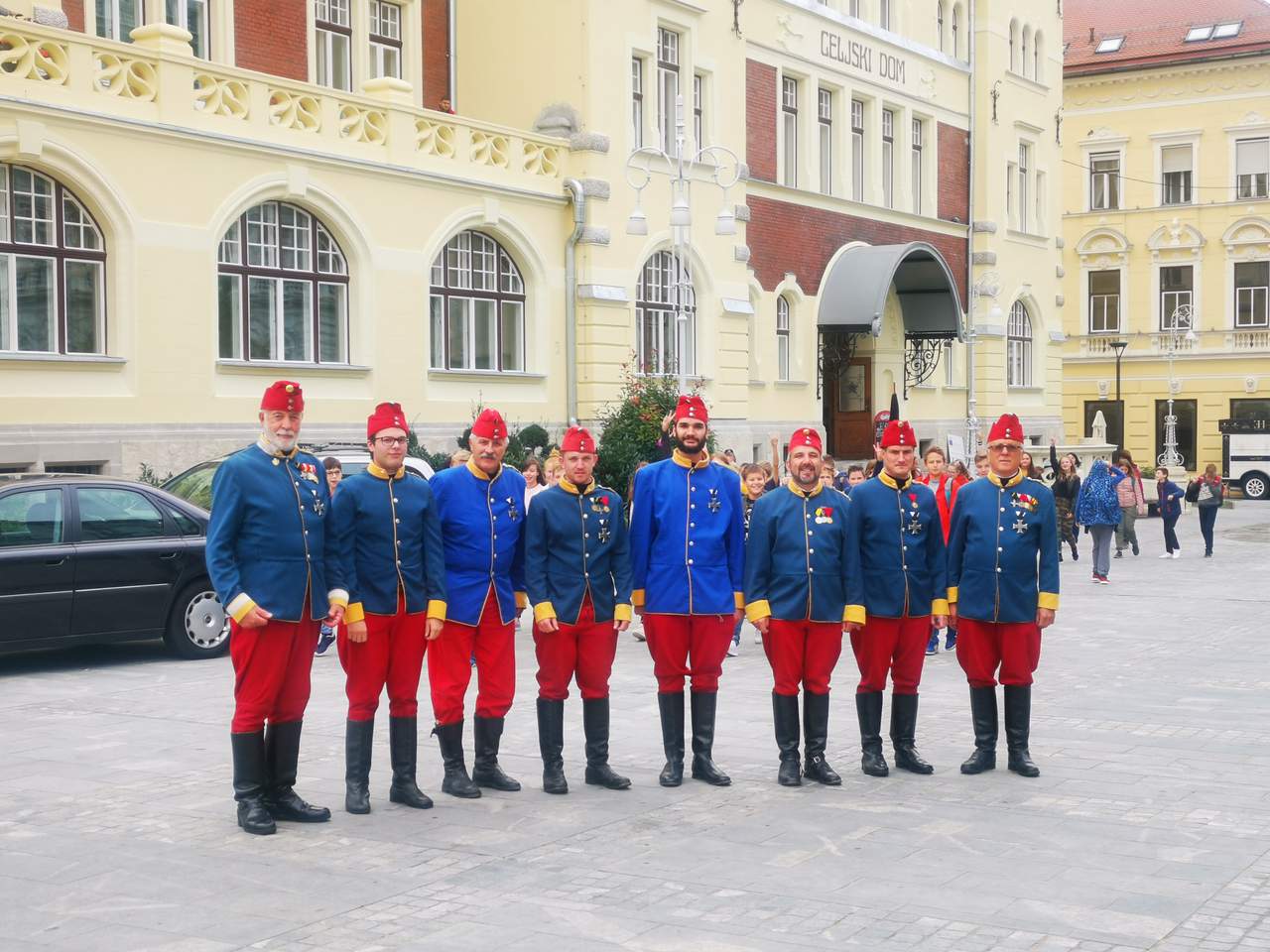Old Austro-Hungarian Army
Pevski zbor DRAGONARJI GENERALA MAISTRA, ki ga vodi zborovodja Jože Oblak, je bil ustanovljen decembra leta 2007. Deluje v sklopu konjeniškega društva Lovrenc, društva ljubiteljev narave, konj in tradicije iz Dolenje vasi pri Cerknici. Pojejmo vojaške pesmi iz obdobja do konca 1. svetovne vojne in pesmi, ki jih je napisal general Maister. Maister je bil vseskozi vzoren vojak. Bil je tudi odličen telovadec, plavalec, smučar in sabljač. Prav zato je v avstrijski vojski napredoval do naziva major in v Mariboru prevzel poveljstvo poveljstva št. 26.. Poleg tega se je ukvarjal z pisanjem pesmi, slikarstvom in bibliografijo. Po prvi svetovni vojni mu je mariborski narodni svet podelil naziv generala. Pevci vadimo na Uncu, v kraju, kjer je zadnja leta živel in tudi umrl general Maister. Od tod tudi ime pevskega zbora. Nastopamo v uniformah, ki ponazarjajo štajersko koroško, kranjski konjeniški polk št 5, ki je ob koncu 1. svetovne vojne v večini prestopil k generalu Maistru in tako pomagal ustvarjati slovensko zgodovino. V tem polku je bilo 1914 leta 51 procentov slovenskih fantov, zato je bil imenovan tudi kot slovenski polk. Polk je bil ustanovljen daljnega leta 1721. Naborni okraj je bil v Gradcu, polkovne enote pa so bile nastanjene v Gorici in Slovenski Bistrici. Do leta 1868 so imeli dragonci bele uniforme, po tem letu pa modre suknjiče, rdeče hlače in rdeče kape. V vojni z Rusijo so jih rusi zaradi neustrašnega bojevanja imenovali tudi rdeči hudiči. Oborožitev dragonca je bila kratkocevna puška z bajonetom in sablja, častniki pa so nosili revolverje. K opremi je poleg konja spadal tudi šlem – zaščitna čelada in mantel pelc - zimski površnik obložen znotraj z ovčjim krznom. In kot zanimivost - dragonski častniki so morali nositi brke. Dragonci se proti koncu prve svetovne niso več bojevali na konjih, ampak so konje potrebovali samo do prihoda na frontno črto, naprej pa so se bojevali peš. V prvi svetovni vojni so njihovo živobarvno uniformo zamenjale dolgočasne zeleno sive uniforme, ki so bile bolj praktične, saj niso bili tako opazni, a čar nekdanjih časov je tako dokončno izginil. Pri nas so dragonce imenovali dragonarji ali finfarji, kar je nemška skovanka iz št. 5. Na slavnostni paradi v čast osvoboditve Maribora so 15. decembra 1918 na čelu parade z zastavami v rokah in oljčnimi vejicami na njih ponosno jezdili trije nekdanji vojaki 5. dragonskega polka. Zbor želi skozi pesem ohraniti spomin na fante, ki so služili v tujih vojskah in se na ta način borili tudi za slovensko zemljo. DRAGONARJI GENERAL MAISTRA choir, led by choirmaster Jože Oblak, was founded in December 2007. It operates as part of the Lovrenc Equestrian Association, an association of lovers of nature, horses and tradition from the village of Dolenja vas, near Cerknica. They sing military songs from the period up to the end of World War 1 and songs written by General Maister. Maister was an exemplary soldier throughout. He was also an excellent gymnast, swimmer, skier and fencer. That is why he was promoted to the rank of major in the Austrian army and took over the command of the command no. 26.. In addition, he was engaged in writing poems, painting and bibliography. After the First World War, the Maribor National Council awarded him the title of general. The choir practice at Unec, the place where General Maister lived and died in recent years. Hence the name of the choir. We perform in uniforms that illustrate the Styrian Carinthia, Carniola Cavalry Regiment No. 5, which at the end of World War 1 mostly transferred to General Maister and thus helped create Slovenian history. In 1914, 51 percent of Slovenian boys were in this regiment, which is why it was also named as the Slovenian regiment. The regiment was founded way back in 1721. The recruiting district was in Graz, and the regimental units were stationed in Gorica and Slovenska Bistrica. Until 1868, 'Dragonarji' had white uniforms, but after that year blue jackets, red trousers and red caps. In the war with Russia, the Russians also called them red devils because of their fearless fighting. Soldier's armament was a short-barreled rifle with a bayonet and a sabre, while the officers carried revolvers. In addition to the horse, the equipment also included a helmet - a protective helmet and a 'mantel pelc'- a winter coat lined on the inside with sheep fur. And as an interesting fact - Austro-Hungarian officers had to wear mustaches. Towards the end of the First World War, the army no longer fought on horseback, but only needed horses until they arrived at the front line, and continued to fight on foot. In the First World War, their brightly colored uniforms were replaced by dull green-grey uniforms, which were more practical as they were not as noticeable, but the charm of the old days was thus completely gone. At the ceremonial parade in honor of the liberation of Maribor on December 15, 1918, three former soldiers of the 5th Dragoon Regiment proudly rode at the head of the parade with flags in their hands and olive branches on them. Through the song, the choir wants to preserve the memory of the boys who served in foreign armies and in this way also fought for Slovenian land.
